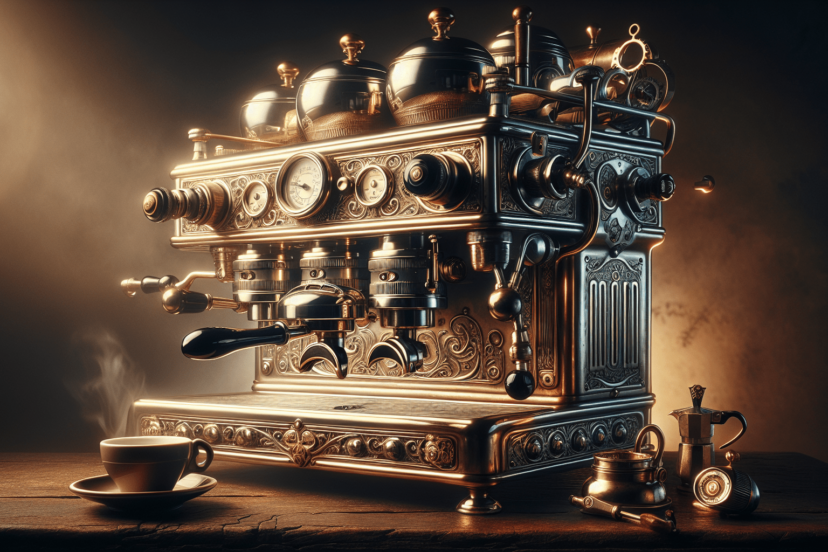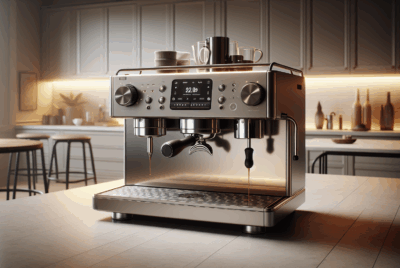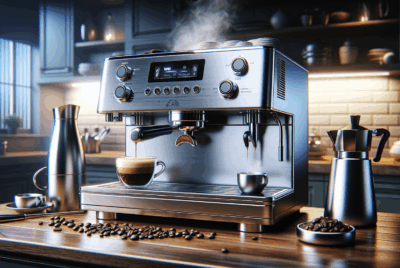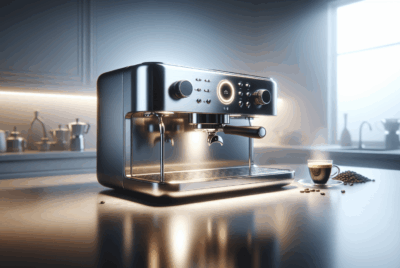Exploring the Charm of Vintage Espresso Machines
As an Amazon Associate, I earn from qualifying purchases, at no additional cost to you. Disclaimer
Do you remember that first sip of coffee that immediately transported you to another realm of pure bliss and satisfaction? It’s fascinating how a good espresso can create such a remarkable effect, right? If you are someone who appreciates the nuanced interplay between history, craftsmanship, and flavor, then exploring vintage espresso machines might be your next thrilling journey. These machines hold more than just the key to an extraordinary cup of coffee; they encapsulate an era, a method, and perhaps even the soul of brewing that modern machines sometimes overlook. Join me as we uncover the charm and allure surrounding vintage espresso machines and learn why they continue to captivate coffee enthusiasts around the world.
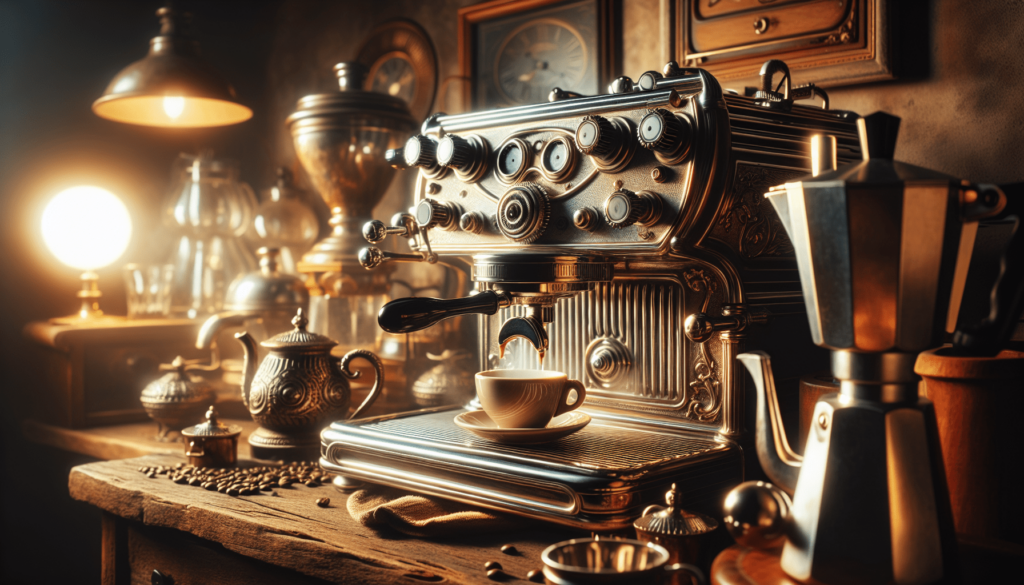
Click Here to Transform Your Morning Routine
Understanding Vintage Espresso Machines
To genuinely appreciate the charm of vintage espresso machines, it’s essential to first understand their history and functionality. Vintage machines are those which were typically manufactured more than two or three decades ago. They reflect the unique design and engineering ethos of their time, often coming with levers and manual controls that prioritize craftsmanship over automation.
The Golden Era of Espresso Machines
Espresso has been an integral part of Italian culture since the turn of the 20th century. Initially invented in 1884 by Angelo Moriondo of Turin, the first patented espresso machine represented immense innovation. As espresso popularity spread, particularly post-World War II, diverse designs evolved, giving birth to what many consider the golden era of espresso machines during the 1950s and 60s. These machines were characterized by elegant designs and were often considered luxury items.
Key Features of Vintage Machines
Unlike modern espresso machines, vintage models are usually constructed with heavy-duty materials like brass, copper, and chrome. Their distinct engineering features often include the use of manual levers and intricate pressure gauges which require the barista to possess a deeper understanding of the brewing process. This manual involvement adds a layer of personal connection to the art of espresso-making.
Why Vintage Espresso Machines Stand Out
You might wonder why so many people are still enamored with these older machines in an age replete with technology. Beyond their nostalgic appeal, vintage espresso machines offer a tactile experience that makes every coffee cup brewed feel like a work of art. The craftsmanship involved requires patience and skill, ultimately resulting in a rich and flavorful cup of espresso, cherished by purists worldwide.
The Art of Brewing with Vintage Espresso Machines
Brewing a perfect espresso with a vintage machine requires skill. It’s an experience that ties you closer to the process, letting you enjoy each step from bean to cup.
The Manual Process
Using a vintage espresso machine is distinctly different from pressing a button on an automatic model. You have to pay attention to water temperature, grinding consistency, coffee dosage, and extraction timing. The manual lever or spring mechanisms on these machines allow for finer control over the espresso shot characteristics, giving you a deeper orientation to the coffee brewing process.
Lever vs. Pump
One of the unique aspects is the dominant use of lever-driven systems. Lever machines can be classified into two types: manual piston and spring piston. Manual piston machines rely entirely on your skill to pull the lever and force water through the coffee grounds at the correct pressure. On the other hand, spring piston machines use a spring to help maintain the pressure, thus stabilizing the extraction process. Both require an understanding and a sense of timing that can transform the brewing process into a gratifying ritual.
| Feature | Manual Lever Machines | Spring Lever Machines |
|---|---|---|
| Pressure Control | Directly controlled by the user | Assisted by a spring mechanism |
| Skill Requirement | High | Moderate |
| Flavor Consistency | Varies based on skill | More consistent |
Achieving the Perfect Espresso Shot
To master the art, you need to balance several variables precisely. Grinding should be done immediately before brewing to ensure the freshness of your coffee. The grind should be fine but not too powdery, as this could clog the machine. Consistent pressure application is crucial for a good extraction, and the temperature needs to be in the ideal range to avoid bitterness or sourness.
Click Here to Upgrade Your Coffee Setup
Maintenance and Care of Vintage Espresso Machines
Maintaining a vintage espresso machine is just as crucial to its performance as the brewing process itself. Proper care ensures longevity and consistent performance.
Regular Cleaning
Just like any other coffee machine, regular cleaning is necessary to prevent residue build-up. After every use, you should flush the machine with fresh water to clean out any remaining coffee grounds. Pay special attention to the group head, steam wand, and portafilter — these areas are most affected by residue build-up.
Descaling
A more in-depth process involves descaling the machine. This prevents mineral deposits from building up, which can affect water flow and machine efficiency. Depending on water hardness in your area, this process should be done every few months. Use a gentle descaling solution recommended for vintage machines to avoid damaging any parts.
Finding and Purchasing a Vintage Machine
Are you considering becoming a proud owner of a vintage espresso machine? Finding the right machine requires a mix of patience, enthusiasm, and research.
Identifying a Reliable Seller
When it comes to purchasing a vintage espresso machine, acquiring from reputable sellers is essential. Platforms like online auctions, specialized vintage shops, and sometimes estate sales can be great places to find these machines. Look for sellers who have good reviews and who can provide information about the machine’s history and condition.
What to Look For
Understanding what features suit your needs will help streamline your search. Study the machine’s functionalities— does it have parts that are easily available or replaceable? Consider restoration costs if required. Assess whether you’re comfortable operating a lever vs. spring machine, and identify what maintenance hurdles you might face.
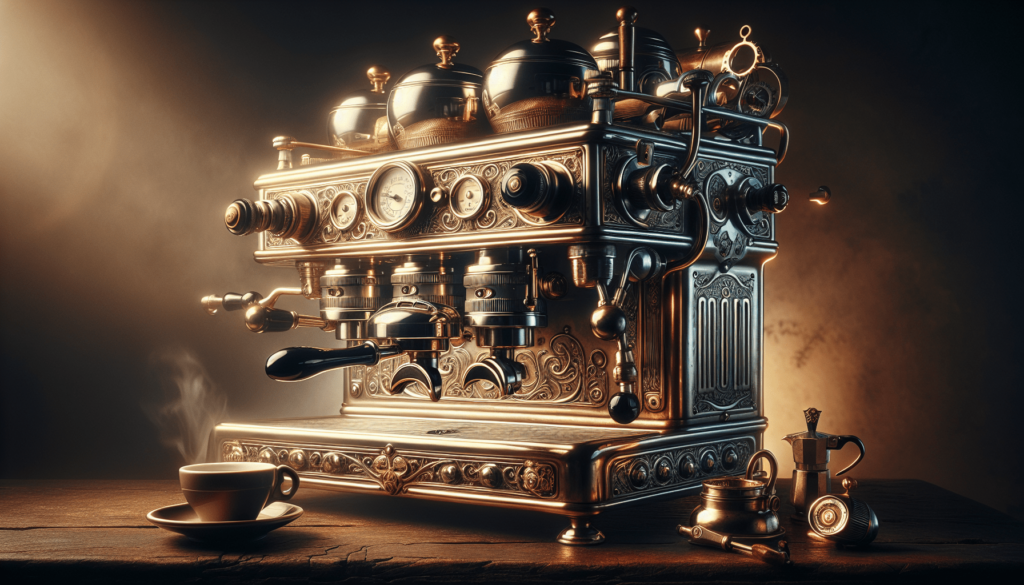
Click Here to Find Your Espresso Match
Restoring and Customizing
Restoring a vintage espresso machine is akin to breathing new life into a piece of history. With some patience and the right tools, your machine can become both a functional brewer and a cherished piece of art.
The Restoration Process
Restoration can range from simple repairs to a complete overhaul, depending on the machine’s condition. Rebuilding involves disassembling the machine, descaling parts, replacing rubber gaskets, and sometimes buffing or re-chroming the exterior surfaces to restore the original sheen. Many enthusiasts find each step incredibly rewarding, enhancing the vintage machine’s personality and longevity.
Customization Options
Your journey with a vintage espresso machine doesn’t have to end at restoration. Customizing can involve updating certain elements to improve usability without losing the machine’s vintage appeal. Modern electrical wiring for better safety, or interchangeable portafilters for ease of use, are some ways to balance functionality with nostalgia.
Community and Culture
Owning a vintage espresso machine opens doors to a broader community of enthusiasts and collectors. Connecting with fellow aficionados can enrich your experience and deepen your appreciation.
Joining Forums and Clubs
Online platforms and local coffee clubs often have dedicated sections or meetings for vintage espresso machine enthusiasts. Joining such forums can provide invaluable insights into troubleshooting, restoration tips, and sourcing parts. Moreover, sharing your experiences fosters a sense of camaraderie and appreciation for these timeless machines.
Sharing Your Journey
Social media and blogging platforms offer excellent opportunities to share your journey with the world. Documenting your experiences, from purchase to restoration and day-to-day use, can inspire others. Instagram, Pinterest, or even dedicated coffee blogs can be fantastic venues to connect with like-minded individuals who share your love for espresso.
The Future of Vintage Espresso Machines
As we marvel over these iconic machines of the past, we can’t help but wonder about their place in the future.
Continuing Relevance
In an era dominated by convenience, the continued interest in vintage espresso machines speaks volumes about the desire for authenticity, craftsmanship, and connection to tradition. The resurgence in their popularity signals a counter-movement towards more tactile and meaningful experiences in coffee making.
Role in Modern Coffee Culture
The reverence for vintage espresso machines also highlights their role in bridging past and present. They serve as testaments to an era where brewing coffee was an art form, offering lessons in patience, skill, and appreciation.
In conclusion, vintage espresso machines are not merely objects but cherished relics that offer an extraordinary glimpse into the history of coffee-making. Engaging with these machines allows you to step into a cherished world where tradition meets taste in the most elegant way possible. Whether you admire them for their aesthetic charm, intricate mechanics, or simply for the superior espresso they produce, vintage espresso machines offer a uniquely fulfilling exploration for any coffee lover.

